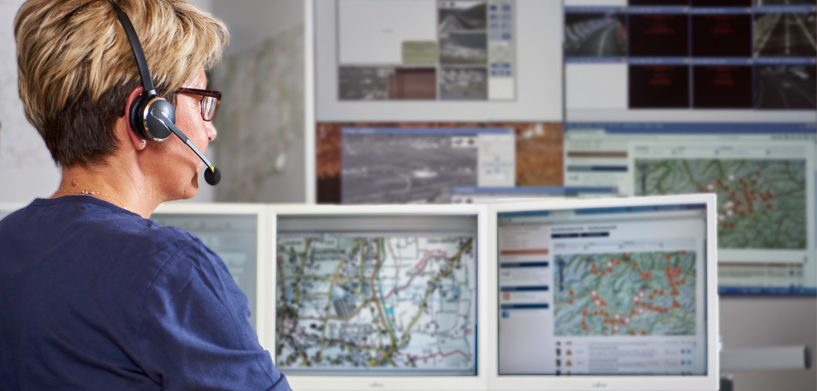COVID-19 has disrupted businesses and organizations all over the world, and public safety agencies are no exception. Like so many others, leaders have had to keep employees safe while maintaining workloads, operations, and performance.
To accomplish this unprecedented task, agencies have been forced to get creative with technology, processes, and procedures. They have established new best practices, used technology in unexpected ways, and found different ways to work. Many of the changes implemented have not only altered the way agencies operate now, but also how they plan to operate in the future.
Building a foundation of trust
At the beginning of the pandemic, the City of Alexandria, Virginia, quickly found itself relying on trust when it came to making necessary modifications to workflows and processes. According to Renee Gordon, director of emergency and customer communications for the City of Alexandria, trust has been instrumental to their operations. They first had to trust science as so many questioned, “Do masks really work? Is six feet far enough?” Leadership had to be trusted to make the best decisions that not only impacted the public, but also staff and their families. And staff had to be trusted to follow the recommended guidelines at work and home.
Staying connected from a distance
Since delivering public safety services often requires face-to-face interaction with people, agencies have had to find ways to cut down on in-person interactions where they can. Like so many other businesses, Charlie McNichol, director of Mobile County Communications District in Alabama, shared that video conferencing and other meeting applications have become the norm.
Using technology to reduce exposure
According to McNichol, they have also leveraged expanded capabilities of their public safety systems, such as their computer-aided dispatch (CAD) solution, to help staff stay safe and reduce their risk of exposure.
“We also used our CAD software to know the locations of individuals who were COVID-19 positive,” explained McNichol.
Deploying remote operations
Faced with the responsibility of keeping teams safe, emergency communications center leaders have experimented with new ways of working. In Alexandria, the team enabled staff to work from remote locations, including their homes.
“We had two of our four shifts move to our backup center, and we tested remote locations,” said Gordon. “The most rewarding has been the at-home 9-1-1 call-taker. Using the FirstNet hotspot, we successfully set up remote call-taking from home. This will forever remain a part of how we do business.”
Changing for the better
While learning to trust each other and the experts, agencies have been forced to get creative with ideas and technology to make their jobs safer and less difficult. For the City of Alexandria, improvements they thought wouldn’t happen until the future are now part of their present.
“We catapulted to the future, and now the creative juices are flowing,” said Gordon. “All the possibilities are coming to life… Ideas are flowing, and we want to try what is next. I love the many what-if ideas staff come up with to make our jobs better.”
Gordon shared that all staff have gotten involved to pose questions such as how to reduce the number of calls or automate tasks. Everyone is now looking for ways to be more efficient.
“The best thing is all staff, from top to bottom, are part of our creative future,” said Gordon. “And now, we and our vendors are considering the what-ifs.”
COVID-19 Resources for Agency Leaders
- Article: Data analytics key to strengthening COVID-19 response
- Podcast: Public Safety Now: Leadership in crisis
- Blog: 5 ways public safety agencies can prepare for crisis
Enjoy this post? Subscribe to our blog and have industry insights delivered right to your inbox each week. Subscribe now.
















